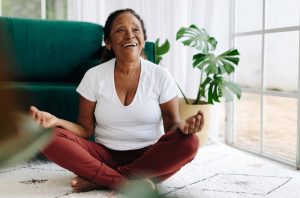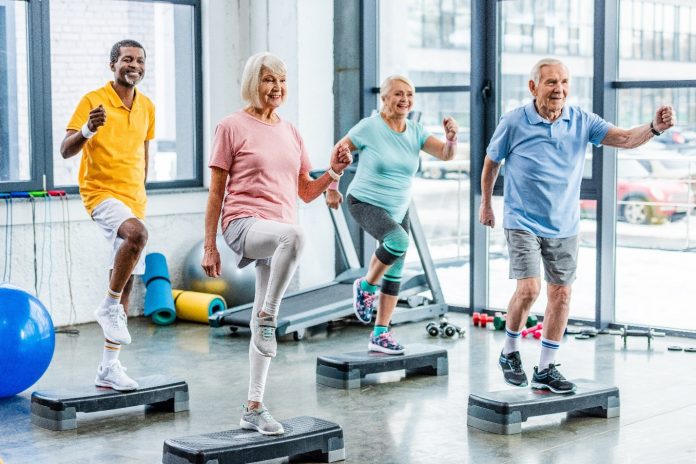Aging is a natural process that brings about various changes in the body, but that doesn’t mean that growing older has to result in a loss of independence. Functional fitness offers a way to maintain, and even improve, strength, flexibility, and mobility, allowing seniors to continue performing everyday tasks with ease. John Telesca will explore the role of functional fitness in aging, how exercises that mimic daily movements can promote independence, and practical routines to integrate these movements into your fitness regimen.
What is Functional Fitness?
Functional fitness is a training approach that focuses on exercises replicating the movements we perform in our daily lives. John Telesca of NY understands that, unlike traditional fitness programs that isolate specific muscle groups, functional fitness emphasizes multi-joint, multi-muscle movements that enhance your ability to perform everyday activities, such as squatting to pick up an object, reaching to retrieve something from a shelf, or lifting a heavy bag of groceries. For seniors, functional fitness is particularly beneficial because it strengthens the muscles needed for routine tasks, helps maintain balance, and reduces the risk of falls. It focuses on improving strength, endurance, flexibility, and coordination, all of which are critical for maintaining independence as we age.
The Benefits of Functional Fitness for Seniors
John Telesca of Port Chester on engaging in functional fitness exercises offers a range of benefits that directly contribute to a senior’s ability to stay independent:
- Improved Strength and Muscle Mass: As we age, muscle mass naturally decreases, a condition known as sarcopenia. Functional fitness exercises target multiple muscle groups, helping to maintain or even build strength, making it easier to perform everyday activities.
- Enhanced Balance and Coordination: Many functional fitness routines emphasize balance, which is essential for preventing falls, one of the leading causes of injury among seniors.
- Increased Flexibility and Range of Motion: Regularly performing exercises that mimic daily movements helps maintain joint flexibility, reducing stiffness and improving overall mobility.
- Better Posture and Body Mechanics: Functional fitness helps seniors maintain proper posture and alignment, which reduces the strain on joints and muscles, preventing discomfort and injury.
- Improved Cardiovascular Health: Many functional exercises involve sustained movements that raise the heart rate, contributing to overall cardiovascular health, endurance, and energy levels.
- Greater Independence and Quality of Life: By improving the ability to perform daily tasks, functional fitness allows seniors to maintain independence, enhancing their overall quality of life.
Functional Fitness Movements That Mimic Daily Activities
The core of functional fitness lies in exercises that replicate the movements we perform every day. John Telesca shares some key movements and the activities they support:
- Squatting: This movement mimics the act of sitting down or picking something up from the floor. Squats strengthen the legs and glutes, making it easier to rise from a chair or lift objects.
- Reaching and Stretching: Whether reaching for something on a high shelf or stretching to tie your shoes, these movements improve flexibility and shoulder mobility.
- Lifting: Lifting groceries, laundry baskets, or even your grandchild requires a combination of upper and lower body strength. Incorporating lifting exercises helps build this strength safely.
- Pushing and Pulling: Activities like opening heavy doors or pulling yourself up from a seated position involve pushing and pulling motions, which are essential for upper body strength.
- Balancing: Balance exercises help prevent falls by improving stability and coordination, which is critical for maintaining independence.

Incorporating Functional Fitness into Your Daily Routine
Consistency is key to reaping the benefits of functional fitness. John Telesca of Port Chester provides some tips to integrate these exercises into your daily routine:
- Start Small: If you’re new to exercise, start with just a few repetitions of each movement and gradually increase as you build strength and confidence.
- Combine Movements: You can combine exercises to create a full-body routine. For example, try doing chair squats followed by wall push-ups and step-ups for a complete workout.
- Use Household Items: Incorporate everyday objects like water bottles, canned goods, or towels to add resistance and variety to your exercises.
- Perform Functional Movements Throughout the Day: Practice squatting when picking up items, stand on one leg while brushing your teeth, or reach overhead to stretch during TV commercials.

Safety Tips for Seniors Engaging in Functional Fitness
While functional fitness exercises are generally safe for seniors, John Telesca understands that it’s essential to keep the following safety tips in mind:
- Consult with a Healthcare Professional: Before starting any new exercise program, consult with your doctor, especially if you have any pre-existing health conditions.
- Use Proper Form: Maintaining good posture and alignment is crucial to prevent injury. If you’re unsure about your form, consider working with a fitness professional who specializes in senior fitness.
- Start Slowly: Begin with low-intensity exercises and gradually increase as your strength and endurance improve.
- Listen to Your Body: Pay attention to any discomfort or pain and modify exercises as needed.
Functional fitness is a powerful tool for maintaining independence and improving quality of life as we age. John Televsca emphasizes that by incorporating exercises that mimic daily movements, seniors can build strength, enhance balance, and maintain the flexibility needed to perform everyday tasks with confidence. Remember, it’s never too late to start. John Telesca of Port Chester believes that by embracing functional fitness, you can stay active, healthy, and independent for years to come.



